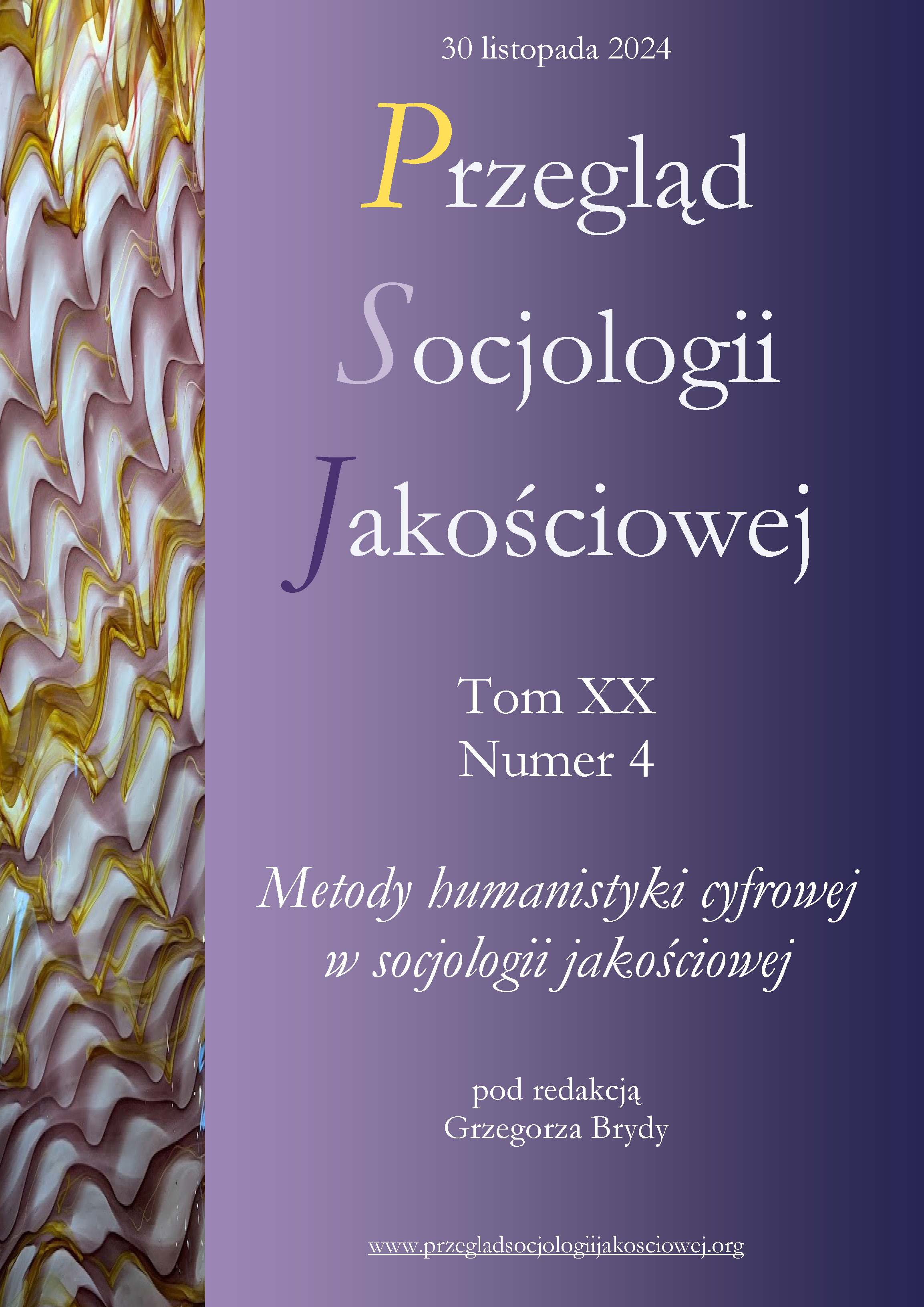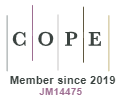Shadowing as a Method of Monitoring the Museum Experience of People with Disabilities: Toward a Comprehensive Multimodality Design
DOI:
https://doi.org/10.18778/1733-8069.20.4.12Keywords:
universal design, assistive technologies, multimodality, disability, accessAbstract
The article explores the challenges associated with ensuring accessibility in museums for visitors with various disabilities. The analysis encompasses strategies for implementing technology and universal design to enhance accessibility while preserving esthetic and informational values. The study highlights multimodality as a promising solution integrating different forms of reception within museum collections. Research conducted at the Czartoryski Museum, a branch of the National Museum in Kraków, gathered experiences and opinions from visitors with disabilities regarding current accessibility solutions. The findings suggest that modern museums should offer multiple access channels to meet diverse needs, enabling visitors to effectively utilize resources. Additionally, the engagement of individuals with disabilities in evaluating and co-creating accessible solutions is crucial, as their input provides valuable and constructive insights. These conclusions emphasize the necessity of taking action toward inclusivity, which may contribute to redefining accessibility strategies in museums worldwide.
Downloads
References
Ailisto Heikki, Plomp Johan, Pohjanheimo Lauri, Strömmer Esko (2003), A Physical Selection Paradigm for Ubiquitous Computing, https://www.researchgate.net/publication/220774875_A_Physical_Selection_Paradigm_for_Ubiquitous_Computing [accessed: 15.08.2024].
Google Scholar
DOI: https://doi.org/10.1007/978-3-540-39863-9_28
Bartkowiak-Theron Isabelle, Sappey Jennifer Robyn (2012), The methodological identity of shadowing in social science research, “Qualitative Research Journal”, vol. 12(1), pp. 7–16.
Google Scholar
DOI: https://doi.org/10.1108/14439881211222697
Bellotti Francesco, Berta Riccardo, De Gloria Alessandro, Margarone Massimiliano (2003), Supporting Efficient Design of Mobile HCI, [in:] Luca Chittaro (ed.), Human Computer Interaction with Mobile Devices and Services, Berlin–Heidelberg: Springer, pp. 241–255, https://link.springer.com/chapter/10.1007/978-3-540-45233-1_18 [accessed: 15.08.2024].
Google Scholar
DOI: https://doi.org/10.1007/978-3-540-45233-1_18
Bryant Diane Pedrotty, Bryant Brian (2003), Assistive Technology for People with Disability, Boston: Pearson Education.
Google Scholar
Cock Matthew, Bretton Molly, Fineman Anna, France Richard, Madge Claire, Sharp Melanie (2018), State of Museum Access: Does Your Museum Website Welcome and Inform Disabled Visitors?, http://vocaleyes.co.uk/state-of-museum-access-2018 [accessed: 3.06.2021].
Google Scholar
Del Chiappa Giacomo, Andreu Luisa, Gallarza Martina G. (2014), Emotions and visitors’ satisfaction at a museum, “International Journal of Culture, Tourism and Hospitality Research”, vol. 8(4), pp. 420–431.
Google Scholar
DOI: https://doi.org/10.1108/IJCTHR-03-2014-0024
Dubiel Monika (2020), Together or Separated? The Segregative and Integrative Model of Cultural Accessibility for Persons with Disability, “Studia Humanistyczne AGH”, vol. 19(3), pp. 139–156, https://doi.org/10.7494/human.2020.19.3.139
Google Scholar
DOI: https://doi.org/10.7494/human.2020.19.3.139
Eardley Alison, Mineiro Clara, Ride Peter, Neves Joselia (2016), Redefining Access: Embracing multimodality, memorability and shared experience in Museums, “Curator: The Museum Journal”, vol. 59(3), pp. 263–286.
Google Scholar
DOI: https://doi.org/10.1111/cura.12163
Gawron Grzegorz (2015), Universal Design – Projektowanie uniwersalne jako idea w dążeniu do osiągania partycypacji społecznej osób niepełnosprawnych, „Roczniki Nauk Społecznych”, vol. 43(1), pp. 125–144.
Google Scholar
DOI: https://doi.org/10.18290/rns.2015.7(43).1-9
Goldberg Larry (2010), Exhibit Design Relating to Low Vision and Blindness: Current Media Technology, Appropriate Application of Technology, Future Research Needs, “White Paper”, Bloomington: Indiana University.
Google Scholar
Jiménez Hurtado Catalina, Seibel Claudia, Soler Gallego Silvia (2012), Museums for all. Translation and Interpreting for Multimodal Spaces as a Tool for Universal Accessibility, https://rua.ua.es/dspace/bitstream/10045/26955/1/MonTI_04_16_trans.pdf [accessed: 3.06.2022].
Google Scholar
Kelly Lynda (2004), Evaluation, research and communities of practice: Program evaluation in museums, “Archival Science”, vol. 4(1–2), pp. 45–69.
Google Scholar
DOI: https://doi.org/10.1007/BF02390852
Kress Gunther (2010), Multimodality: A Social Semiotic Approach to Contemporary Communication, London: Routledge.
Google Scholar
Kriegstein Katharina von, Giraud Anne-Lise (2006), Implicit multisensory associations influence voice recognition, “PLoS Biology”, vol. 4(10), pp. 326–327.
Google Scholar
DOI: https://doi.org/10.1371/journal.pbio.0040326
Lehmann Sandra, Murray Micah M. (2005), The role of multisensory memories in unisensory object discrimination, “Cognitive Brain Research”, vol. 24(2), pp. 326–334.
Google Scholar
DOI: https://doi.org/10.1016/j.cogbrainres.2005.02.005
McDonald Seonaidh (2005), Studying actions in context: a qualitative shadowing method for organizational research, “Qualitative Research”, vol. 5(4), pp. 455–473, https://doi.org/10.1177/1468794105056923
Google Scholar
DOI: https://doi.org/10.1177/1468794105056923
McManus Paulette M. (1993), Memories as indicators of the impact of museum visits, “Museum Management and Curatorship”, vol. 12(4), pp. 367–380.
Google Scholar
DOI: https://doi.org/10.1016/0964-7775(93)90034-G
Murray Micah M., Molholm Sophie, Michel Christoph M., Heslenfeld Dirk J., Ritter Walter, Javitt Daniel C., Schroeder Charles E., Foxe John J. (2005), Grabbing your ear: rapid auditory – somatosensory multisensory interactions in low-level sensory cortices are not constrained by stimulus alignment, “Cerebral Cortex”, vol. 15(7), pp. 963–974.
Google Scholar
DOI: https://doi.org/10.1093/cercor/bhh197
Nyberg Lars, Habib Reza, McIntosh Anthony R., Tulving Endel (2000), Reactivation of encoding-related brain activity during memory retrieval, “Proceedings of the National Academy of Sciences”, vol. 97(20), pp. 11120–11124, https://doi.org/10.1073/pnas.97.20.11120
Google Scholar
DOI: https://doi.org/10.1073/pnas.97.20.11120
Osterman Mark (2017), Accessibility and Technology: Developing a Virtual Access Tour, MW17: Museums and the Web, https://mw17.mwconf.org/paper/accessibility-and-technology-developing-a-virtual-access-tour/ [accessed: 3.06.2022].
Google Scholar
Parzyńska Iwona, Żuchowska-Skiba Dorota, Cichy Beata, Gajoch Paulina (2023), Pułapki (nie)dostępności – muzeum w dobie nowoczesnych technologii: na przykładzie Muzeum Narodowego w Krakowie, [in:] Grzegorz Całek, Jakub Niedbalski, Mariola Racław, Marta Sałkowska, Joanna Sztobryn-Giercuszkiewicz, Dorota Żuchowska-Skiba (eds.), Niepełnosprawność i edukacja, Łódź: Wydawnictwo Uniwersytetu Łódzkiego, pp. 163–177.
Google Scholar
DOI: https://doi.org/10.18778/8331-115-9.10
Pine Joseph B., Gilmore James H. (1998), Welcome to the experience economy, “Harvard Business Review”, vol. 76, pp. 97–105.
Google Scholar
Quinlan Elizabeth (2008), Conspicuous invisibility: Shadowing as a data collection strategy, “Qualitative Inquiry”, vol. 14(8), pp. 1480–1499.
Google Scholar
DOI: https://doi.org/10.1177/1077800408318318
Rappolt-Schlichtmann Gabrielle, Daley Samantha G. (2013), Providing access to engagement in learning: The potential of Universal Design for Learning in museum design, “Curator: The Museum Journal”, vol. 56(3), pp. 307–321.
Google Scholar
DOI: https://doi.org/10.1111/cura.12030
Rizzo Alessandra (2019), Museums as disseminators of niche knowledge: Universality in accessibility for all, “Journal of Audiovisual Translation”, vol. 2(2), pp. 92–136.
Google Scholar
DOI: https://doi.org/10.47476/jat.v2i2.93
Ruiz Belén, Pajares José Luis, Utray Francisco, Moreno Lourdes (2011), Design for All in multimedia guides for museums, “Computers in Human Behaviour”, vol. 27(4), pp. 1408–1415.
Google Scholar
DOI: https://doi.org/10.1016/j.chb.2010.07.044
Sandell Richard (1998), Museums as agents of social inclusion, “Museum Management and Curatorship”, vol. 17(4), pp. 401–418.
Google Scholar
DOI: https://doi.org/10.1080/09647779800401704
Santoro Carmen, Paternò Fabio, Ricci Giulia, Leporini Barbara (2007), A multimodal Mobile Museum Guide for All, Workshop on Mobile Interaction with the Real World (MIRW 2007), pp. 21–25, https://www.researchgate.net/publication/228569329_A_multimodal_mobile_museum_guide_for_all [accessed: 15.08.2024].
Google Scholar
Seitz Aaron R., Kim Robin, Shams Ladan (2006), Sound facilitates visual learning, “Current Biology”, vol. 16(14), pp. 1422–1427.
Google Scholar
DOI: https://doi.org/10.1016/j.cub.2006.05.048
Shakespeare Tom (2008), The social model of disability, [in:] Lennard J. Davis (ed.), The Disability Studies Reader, New York–London: Routledge, pp. 214–221.
Google Scholar
Steinfeld Edward, Maisel Jordana (2010), Advancing universal design. The state of the science in universal design: emerging research and development, Buffalo: State University of New York, Bentham eBooks, s. 1–19.
Google Scholar
DOI: https://doi.org/10.2174/978160805063511001010001
Story Molly F., Mueller James L., Mace Ronald L. (1998), The universal design file: Designing for people of all ages and abilities, Raleigh: Center for Universal Design – North Carolina State University.
Google Scholar
Weele Simon van der, Bredewold Femmianne (2021), Shadowing as a qualitative research method for intellectual disability research: Opportunities and challenges, “Journal of Intellectual & Developmental Disability”, vol. 46(4), pp. 340–350.
Google Scholar
DOI: https://doi.org/10.3109/13668250.2021.1873752
Wyman Bruce, Timpson Corey, Gillam Scott, Bahram Sina (2016), Inclusive design: From approach to execution, https://mw2016.museumsandtheweb.com/paper/inclusive-design-from-approach-to-execution/ [accessed: 20.09.2024].
Google Scholar
Published
Versions
- 2024-11-30 (2)
- 2024-11-30 (1)
How to Cite
Issue
Section
License

This work is licensed under a Creative Commons Attribution-NonCommercial-NoDerivatives 4.0 International License.














